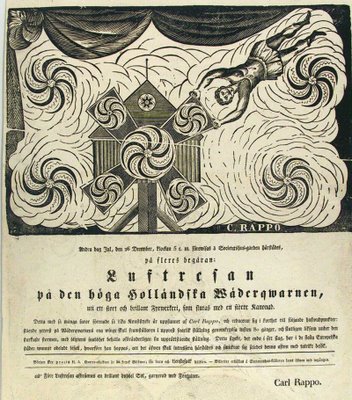
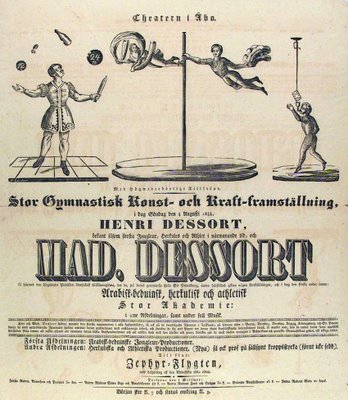
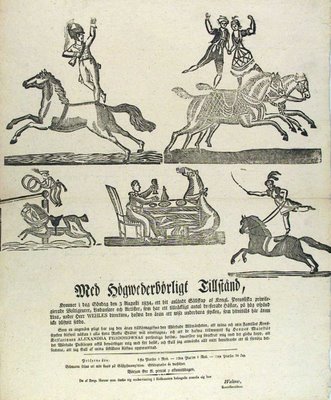



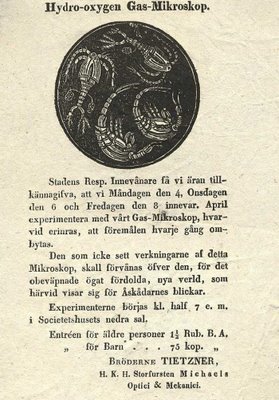
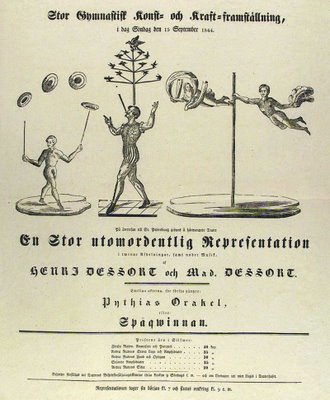
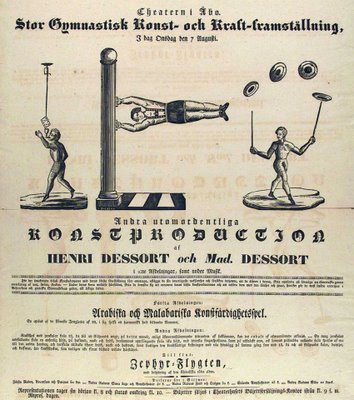
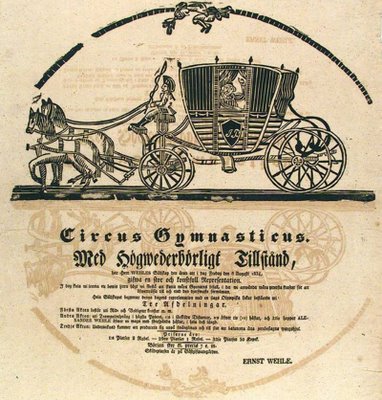
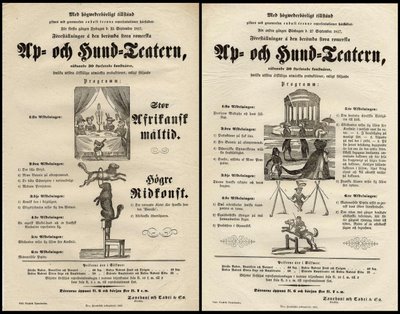
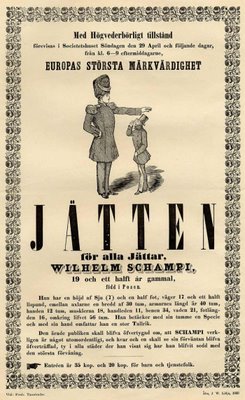

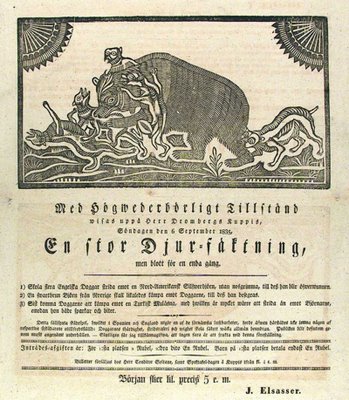
[click to enlarge]
Loci points out the digital collections of the Finland-Sweden University Library [Åbo Akademis Bibliotek Åbo Akademi University {wikipedia}] in Turku, Finland (the site is in swedish but hosted in Finland : I guess that's fair).
The images above come from the section entitled 'Offentliga nöjen i Åbo på 1800-talet- en samling affischer'. They have numerous sideshow/circus/magic/charlatan-esque handbills and ephemera relating predominantly, as far as I can tell, to the local Åbo theatre from between 1830 and 1860. The print quality is obviously cheap, but that quaintly humorous era of stage carnival and visual theatrics comes through loud and clear, irrespective of any translational hurdles. Actually, I think the language disimiliarities are an additive twist.
And speaking of ye olde Victorian era, but not so much at the fringes, things links to a complete 1867 Harper's Bazar magazine.
Saturday, November 25, 2006
Sideshow Finland
Wednesday, November 22, 2006
19th Century Bavarian Maps














The Bayerische Landesbibliothek Online [click on the map] have recently uploaded some 900 survey maps from the state of Bavaria. The mapping project began in 1808 but the majority are from the mid-1800s. Although they don't appear to have the Ajaxy goodness of adjacent background loading, I kind of enjoyed using their thumbnail interface - they 'feel' like vintage satellite maps. There is a placename index too.
These might have been here sooner had it not been for some extreme computer problems in the last few days. Despite having a systems engineer from a major nameless American company here helping to upgrade the memory etc, I lost (among some other stuff) a few hundred bookmarks that I hadn't got around to posting to del.icio.us. That is a seriously annoying happenstance and will probably possibly keep things a bit slower than usual around here for a while. You just have to laugh and move on I guess. I don't see the point in backing them up when they get cycled through here pretty regularly. At least the beige beast zips along now anyway.
- Moon River has also found an exceptional cartographic repository.
- In other news, the many talented Josh advises that the MeFi comp CD is finally available and carries artwork done by John C Ralston {The Liner}. John also contributed to the PolyOrama project.
Sunday, November 19, 2006
The Concept of Mammals
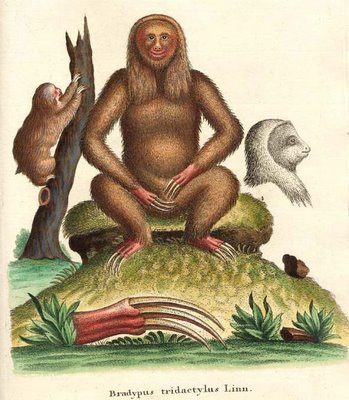
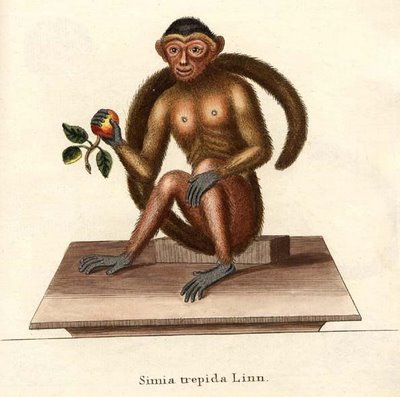
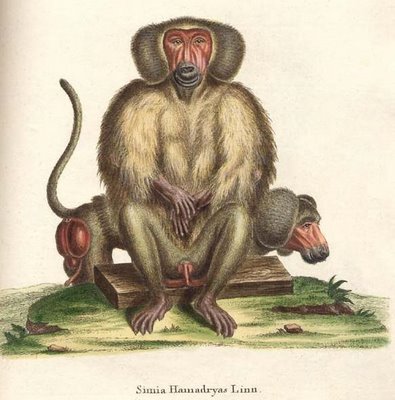
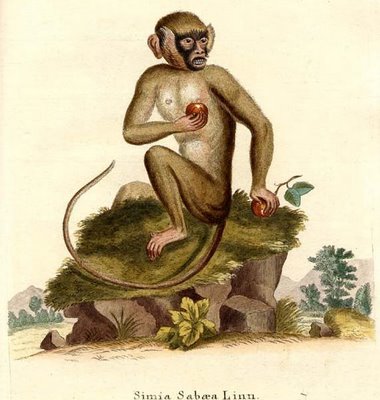
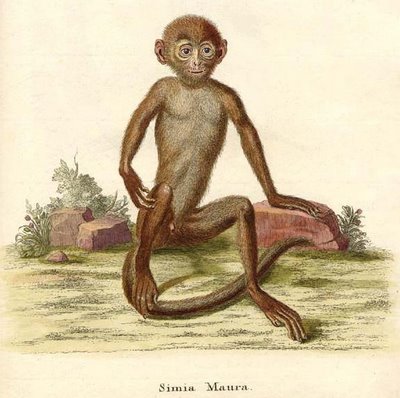
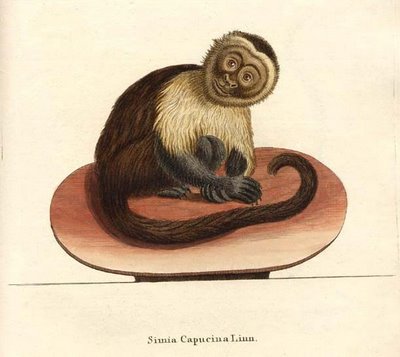
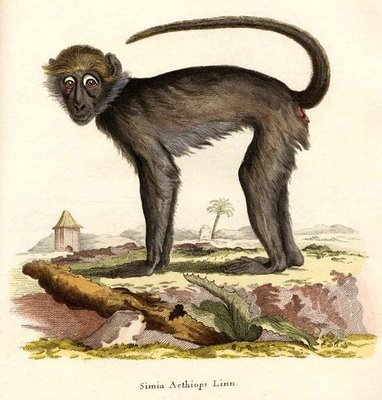
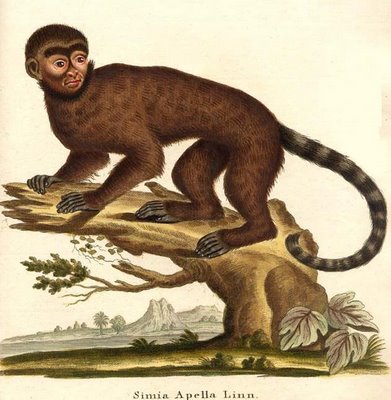
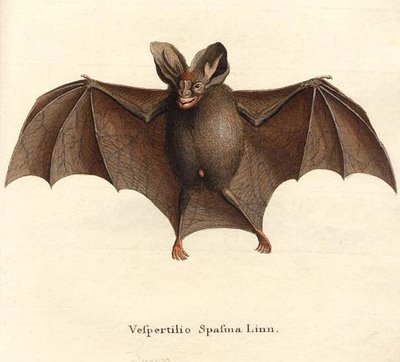
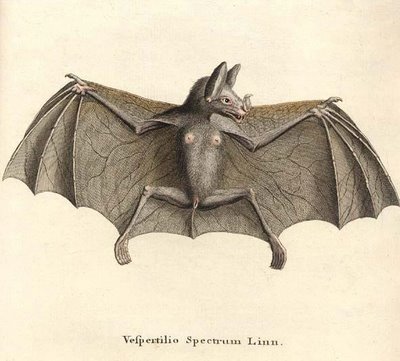
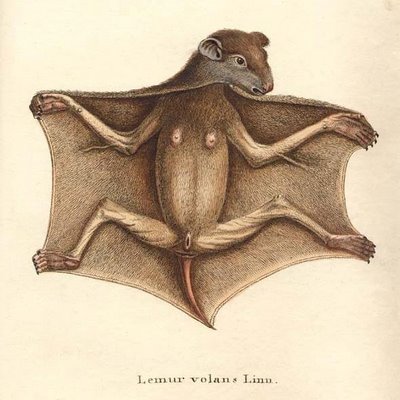


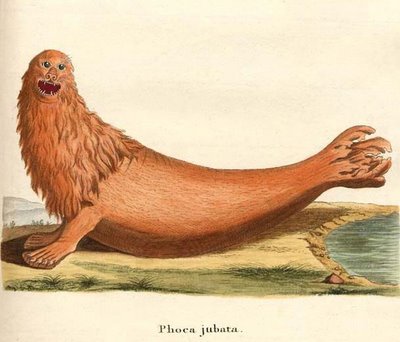

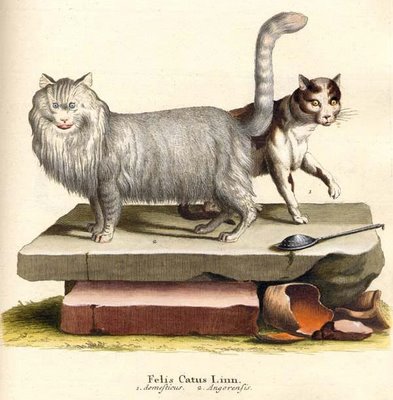
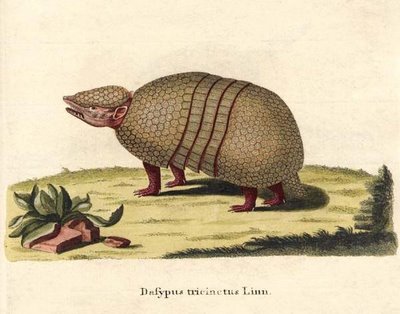
German naturalist Johann Christian Daniel von Schreber (1739-1810) trained as a physician and went and studied botany in Sweden under the great Carolus Linneaus. He would eventually edit one of Linneaus's publications and he also included the Linnean binomial species naming system for the first time for some of the animals depicted above.
Schreber became a Professor of Medicine and Director of the Botanical Gardens in the german city of Erlangen and issued a number of scientific publications. As best I can make out, they are as follows:
--'Novae Species Insectorvm' 1759 [online; see also]
--'Beschreibung der Gräser nebst ihren Abbildungen nach der Natur' ['Description of the grasses with illustrations drawn from nature'] 1766
--'Spicilegium florae lipsicae' 1771 (on fungi)
--'Die Saugthiere in Abbildungen nach der Natur mit Beschreibungen' ['Mammals Illustrated after Nature with Descriptions'] in at least 3 volumes in 1774
The above illustrations come from 'Die Saugthiere in Abbildungen' at Ecole Nationale Vétérinaire de Lyon (named as 'Histoire naturelle des quadrupèdes' - either misslabelled or this is the title of the french edition) -- there are about 200 illustrations available from the original 775 engravings published: [thumbnail pages] Volume I, Volume II, Volume III.
Georges-Louis Leclerc, Comte de Buffon was a contemporary of Schreber and issued his massive 'Histoire Naturelle' series over a couple of decades in the mid-18th century and it contains very similar engravings to those in the Schreber books. Both authors used an engraver called De Seve and I believe that he must have re-engraved plates he had made for the earlier Buffon work. I didn't see any that were identical but there is a very very close resemblance at times.
The absurd rendering of many of the animals comes about because the engravers/artists working on the project did not actually see the animals. They had to rely on descriptions and their imagination and, as was the fashion of the time, the animals were placed in contrived settings and often given human facial qualities, which only serves to heighten the sense of bizarre. And thankful we are too. {The above images have all been cleaned up a little in the background}.









































